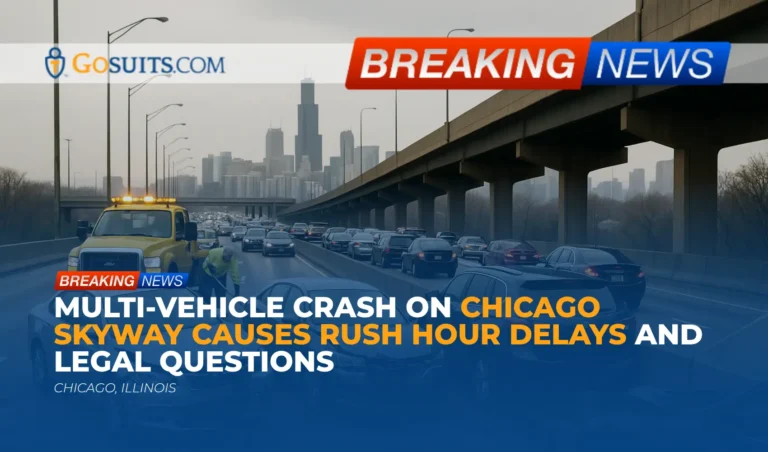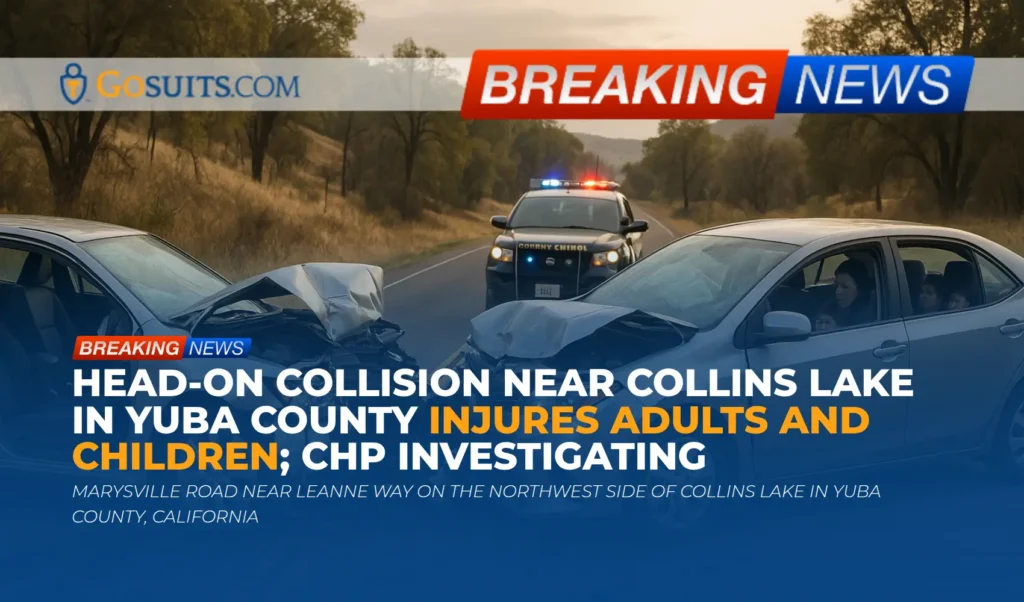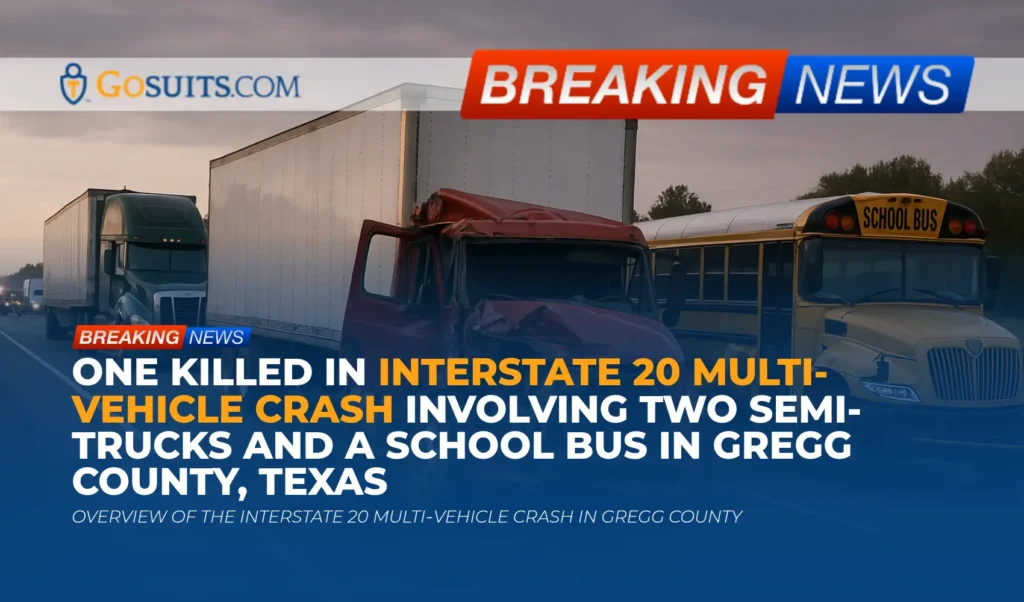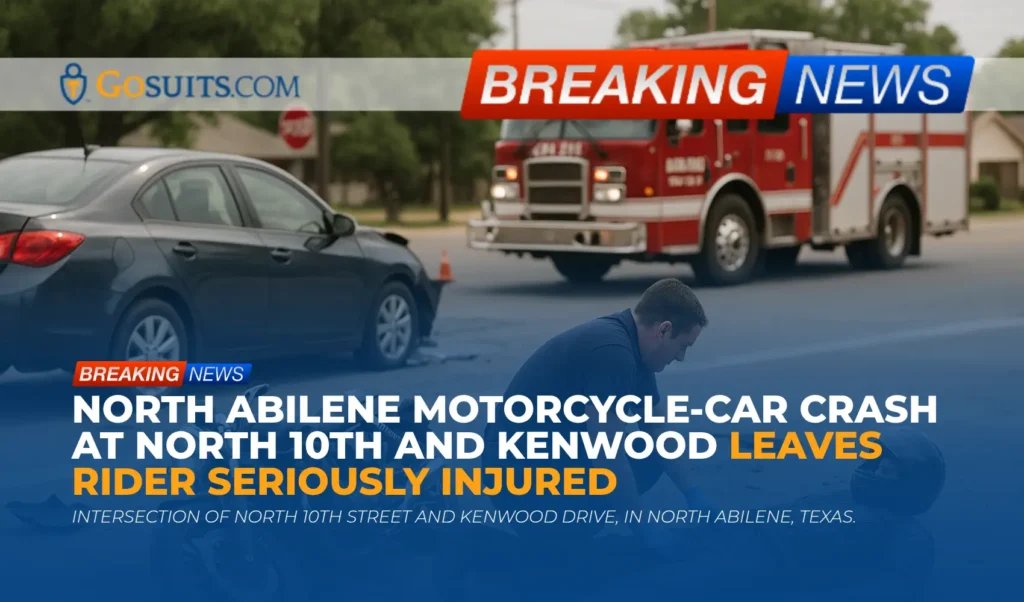A multi-vehicle collision on I-90, also known as the Chicago Skyway, led to significant traffic delays during the Friday afternoon rush hour. The incident occurred near South Chicago around 3:40 p.m. and prompted a backup extending from the Skyway Toll Plaza near 87th Street to Stony Island Avenue.
According to reports, Illinois State Police confirmed that at least two vehicles were to be towed from the scene. Footage from NBC Chicago’s Sky 5 showed highway crews cleaning up debris and at least three vehicles with visible damage. A silver vehicle was observed in the right middle lane, while a black vehicle had crashed into the highway’s dividing wall near two other vehicles on the shoulder. One of the vehicles on the shoulder had sustained rear-end damage.
The incident resulted in delays of up to five minutes and stop-and-go traffic conditions for commuters traveling eastbound on I-90.
Understanding Legal Recourse After a Multi-Vehicle Accident
Multi-vehicle accidents, also known as pile-ups, can be particularly complex from a legal standpoint. Determining liability in these incidents often requires a thorough investigation to understand the sequence of events and the actions of each driver involved. Here are some key considerations from a personal injury perspective:
Establishing Negligence
In any personal injury case arising from a car accident, the central issue is often negligence. To establish negligence, it must be shown that a driver failed to exercise reasonable care, and that this failure directly caused the accident and resulting injuries. In a multi-vehicle scenario, this could involve:
- Following too closely: A driver who rear-ends another vehicle may be considered negligent for not maintaining a safe following distance.
- Speeding: Exceeding the posted speed limit or driving too fast for conditions can contribute to an accident.
- Distracted driving: Engaging in activities like texting, talking on the phone, or adjusting the radio can divert a driver’s attention and lead to a collision.
- Impaired driving: Operating a vehicle under the influence of alcohol or drugs is a clear example of negligence.
- Failure to maintain vehicle: Neglecting necessary maintenance, such as brake repairs, can also lead to accidents.
Determining Liability
Pinpointing the liable party or parties in a multi-vehicle crash can be challenging. Often, multiple drivers may share responsibility. For example, the driver who initiated the chain reaction by rear-ending another vehicle may be primarily liable, but other drivers who contributed to the accident through their own negligent actions may also share fault.
The Role of Insurance Companies
Insurance companies play a significant role in resolving personal injury claims arising from car accidents. Each driver’s insurance policy may provide coverage for damages, depending on the circumstances. However, insurance companies are businesses, and their goal is to minimize payouts. They may attempt to deny claims, minimize the extent of injuries, or shift blame to other parties.
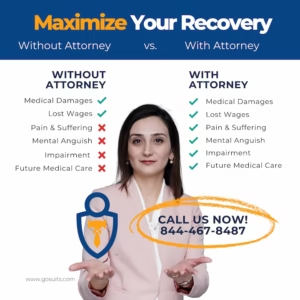
Investigating the Scene
A thorough investigation is essential in multi-vehicle accidents. This may involve:
- Police reports: Police reports provide an initial assessment of the accident, including details of the scene, witness statements, and citations issued.
- Accident reconstruction: Accident reconstruction experts can analyze the evidence to determine how the accident occurred, including factors such as speed, impact angles, and driver behavior.
- Witness statements: Gathering statements from witnesses who observed the accident can provide valuable insights into the sequence of events.
- Vehicle data recorders: Many modern vehicles are equipped with event data recorders (EDRs), which capture information such as speed, braking, and airbag deployment in the moments leading up to a crash.
Potential Damages
If you’ve been injured in a multi-vehicle accident due to someone else’s negligence, you may be entitled to compensation for your damages. These damages can include:
- Medical expenses: This includes costs for treatment, rehabilitation, medication, and ongoing care.
- Lost wages: If your injuries prevent you from working, you may be able to recover lost income.
- Property damage: Compensation for damage to your vehicle or other personal property.
- Pain and suffering: You may be entitled to compensation for the physical pain and emotional distress you’ve experienced as a result of the accident.
Comparative Negligence
Illinois follows a modified comparative negligence rule. This means that you can recover damages even if you were partially at fault for the accident, as long as your percentage of fault is not more than 50%. However, your damages will be reduced by your percentage of fault.
Seeking Legal Guidance
Given the complexities of multi-vehicle accident cases, it’s often beneficial to consult with a seasoned personal injury attorney. An attorney can:
- Investigate the accident thoroughly: Gathering evidence and working with experts to determine liability.
- Navigate the legal process: Filing necessary paperwork and representing you in court, if necessary.
- Negotiate with insurance companies: Protecting your rights and working to secure a fair settlement.
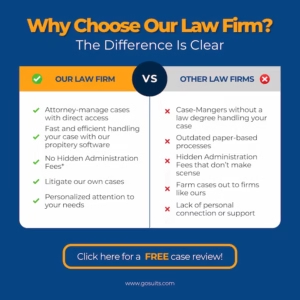
Commentary from Gosuits Chicago, Illinois Personal Injury Attorney
Navigating the aftermath of a multi-vehicle accident can be overwhelming. The intricacies of determining fault, dealing with insurance companies, and understanding your legal rights require a seasoned and skilled advocate. If you or a loved one has been injured in a car accident in Chicago or the surrounding areas, it’s important to understand your options and protect your rights. A dedicated personal injury attorney can provide the guidance and support needed to pursue a just resolution.
